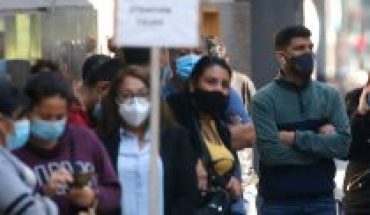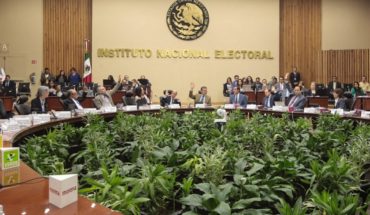The Cerro de Paula, located 9 kilometers from the airport of Santa Lucía, has 30 archaeological sites according to the Public Registry of Monuments and archaeological and historical areas. These data contrast with the three sites recognized by Francisco Sánchez Nava, National Archaeology coordinator of the National Institute of Anthropology and History (INAH).
Interviewed by a political Animal, Sánchez Nava acknowledged that these three sites were discovered by American archaeologists William Timothy Sanders and Jeffrey R. Parsons in the 1970s. Two of the sites are on the slopes of Cerro de Paula and the other at the top.
He said that at the three sites in the Cerro de Paula there is only concentration of materials. That is, there is presence of pieces of vessel or obsidian tips that are evidence of human activity.
Lee: Extraction of water and mining: environmental concerns of inhabitants of Santa Lucia by airport
In the lower part of the hill, Nava affirmed that between the years 70 and 90 they carried out explorations in which they found five remains of mammoth, of a camel and of a tiger of saber teeth. The INAH has not made excavations on the hill for the location of vestiges.
However, the public data on the website of the Directorate of Public Registry of archaeological sites and Monuments Register 30 archaeological site in the Cerro de Paula. 21 with concentration of materials and nine with structures and concentration of materials pertaining to the Aztec, Teotihuacan, Coyotlatelcoyo and Toltec culture.
According to this information, of the nine structures seven of them are Mexica. In the other two structures is not identified the culture to which they belonged, but are located between 1200 and 1521 D.N. E (of our era).
Eight of the structures correspond to mounds and a terrace that were used for a residential purpose. The INAH also recorded that the concentration of materials correspond to ceramic, stone carved and lithic polished composed of obsidian slices.
Although on the website the sites are registered in the Cerro de Paula, Sánchez Nava said that the other 27 sites are in the flat part, so do not correspond to the hill.
Government offered water, development and investment in exchange for airport support in Santa Lucia
Cerro de Paula, a symbol for Temascalapa
For the inhabitants of Temascalapa, Cerro de Paula is a symbol of the municipality and the surrounding community.
The hill is important for air capture, to stop the wind from cyclones. It is a space with endemic flora and animals such as foxes, rabbits, coyotes, opossums and skunks.
The inhabitants told the political Animal that they fear that in addition to the noise, shortage of water and the waste of roads that will have in the area by the construction of the airport, the Cerro de Paula will become a source of materials like gravel, sand and tezontle.
Last year, the inhabitants of Santa Ana Tlachihualpa mobilized against the extraction of materials from one of the mines of Cerro de Paula to the airport of Texcoco.
Also, inhabitants of San Luis Tecuauhtitlán, another community of Temascalapa, camped in the mines to avoid that the machines extracted the material of the hill of San Luis.
“We barely managed to save the hill and now there is a risk of it happening again,” they commented.
For this reason, the inhabitants commented that they wanted to know in detail the project of the airport, what will happen with the hill, which are the environmental affectations and mainly, that a consultation is carried out to express their posture.
Lee: 19 indigenous communities are missing from the Santa Lucía Airport
Vestiges won’t stop airport construction
Francisco Sánchez Nava, INAH’s National archaeology coordinator, said the archaeological sites on the hill are not going to be affected by the construction of the Santa Lucía Airport. In the case that the construction of the airport had any incidence, he explained, the INAH can choose to cover the vestige to protect it or to carry out an exploration with archaeological methods.
“It’s an opportunity to explore, otherwise, we’ll never explore there, because there are about 53000 archaeological sites in the country. Although everything is heritage, we must prioritize. This work is an opportunity to dig and learn more about the people who were in this area, “he said.
In the case of finding a unique vestige, the INAH can prevent build on it. According to Sánchez Nava, the institute has diverted roads, has stopped for months works of the Metro and has inhibited dams when that has happened.
Article 32 of the Federal Law on Monuments and archaeological, artistic and historical areas states that “the National Institute of Anthropology and History will suspend the works that are executed in archaeological monuments without authorization, that violate the granted or In which there is subtraction of archaeological materials. Where appropriate, it shall proceed to the occupation of the place, the revocation of the authorisation and the application of the corresponding penalties. ‘
Thank you for reading! Help us get on with our work. How? Now you can subscribe to the political Animal on Facebook. With your monthly donation you will receive special content. Find out how to subscribe here. Check out our list of frequently asked questions here.
translated from Spanish: Cerro de Paula, near Santa Lucía, has 30 archeological sites
June 2, 2019 |





